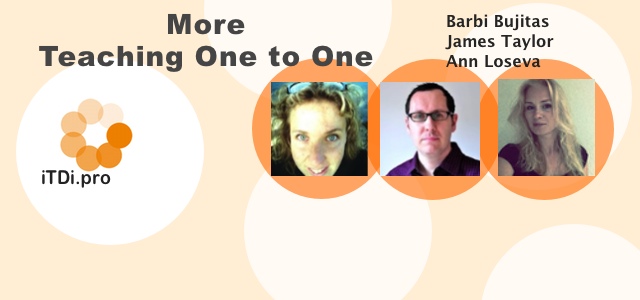
Teaching One-to-One: How It Feels From A Students Perspective – James Taylor
I’ve taught English in a variety of settings. Business, test preparation, general EFL, teacher training, I’ve done them all. Teenagers, students, adults, executives, diplomats, retirees, even other teachers, been there, done that. From sixty minutes to one hour, tick. From one to one to twenty five in a classroom, it’s on my list.
So it’s fair to say that in my teaching career so far, I’ve had a fair bit of variety, but as a language learner, I’ve had almost no variety at all. Every language class I’ve ever had, from school, where I studied French in groups of around twenty and came away with a good grade and a complete inability to speak the language, to the Portuguese lessons I had in Brussels to stop me from getting rusty (it didn’t work), have been in groups. Now for the first time, I’m learning a new language, Spanish, one-to-one so I’m here to report back to you on how it feels from a learner’s perspective. Let’s start with…
Time and Space
Like some kind of language Timelord, I feel that my one-to-one classes give me the ability to control time. I can slow things down to suit me as I wish. If my teacher gives me an activity, I’m the kind of student who likes to calmly, slowly and deliberately get it right. I like to look at my coursebook, handout, notes, or the board, take my time and choose the right answer. One-to-one classes give me that luxury.
I can make spaces too. If I feel I want to spend more time on a particular part of the lesson, whether that be on a grammar bit or the general conversation that inevitably kicks off a class, I can. I have the freedom. Obviously my teacher has a plan, but luckily she’s not the prescriptive type, so she’ll happily allow me to slow things down or follow me down a particularly tangential rabbit hole. Subsequently, that means there is no…
Pressure
No matter how good the teacher is at creating a pleasant, cooperative mood, in a group class there is always pressure. Firstly, there is a pressure to perform to the same level as your peers. I remember my first ever Portuguese lessons a few years back and how most of the other students, whose first languages were also of Latin origin, sailed through the elementary levels, leaving me feeling like the class dunce. At least in a one-to-one class, as well as being the slowest student, I’m also the top of the class!
And who can forget the pressure to finish an activity? There you are, calmly, slowly and deliberately working on the task when you hear a couple of other students muttering to each other. They’ve finished and you’re barely halfway through. Who hasn’t felt their heart quicken, their grip tighten on their pen, and their forehead moisten as that happens? Well, not me anymore, I’m free to dawdle all I wish! Which may not entirely be a good thing, even though this…
No Pressure
… environment means I’m free to do what I want, teacher permitting of course. I’m not sure, however, that that is exactly what I need. Like any student I need motivation to progress and maybe I need some external pressure to get where I need to go. Do I need other people in the classroom to push me along?
I do have some internal motivation. I live in a Spanish speaking country so it would be nice to interact with people, plus it would make my life a bit easier. And when I think of my friends and family back home, the non-teachers, the civilians, as actors would call them, very few of them speak a foreign language and I’m proud of the fact that I do, even if it’s only one and a bit.
But I don’t need Spanish, I can live without it, I just like the idea of it. Is that going to be enough motivation? Only time will tell, but one thing I’m sure of is that, for me…
One Is The Magic Number
… and not the loneliest number, as some would have you believe. I’m an introvert, I don’t like to perform, I don’t enjoy peer pressure and I prefer my own time and space. Like any learner, I need some external motivation to help me succeed, but feeling slow and useless is not it. I don’t feel that I’m missing out by not being with other people. On the contrary, I enjoy the fact that my teacher and I can get to know each other despite my linguistic shortcomings in a way that would be impossible in a group class.
I’m aware that not every student shares my characteristics and situation (and I’m sure my old teachers would be horrified to know that one of their students felt the way I often did). More extroverted types might enjoy the things that I can do without. Good luck to them, but if you can excuse my rampaging ego for a second, this article isn’t about them, it’s about me and one-to-one suits me just fine.
Connect with James and other iTDi Associates, Mentors, and Faculty by joining iTDi Community. Sign Up For A Free iTDi Account to create your profile and get immediate access to our social forums and trial lessons from our English For Teachers and Teacher Development courses.







